35 jaw-dropping James Webb Space Telescope images
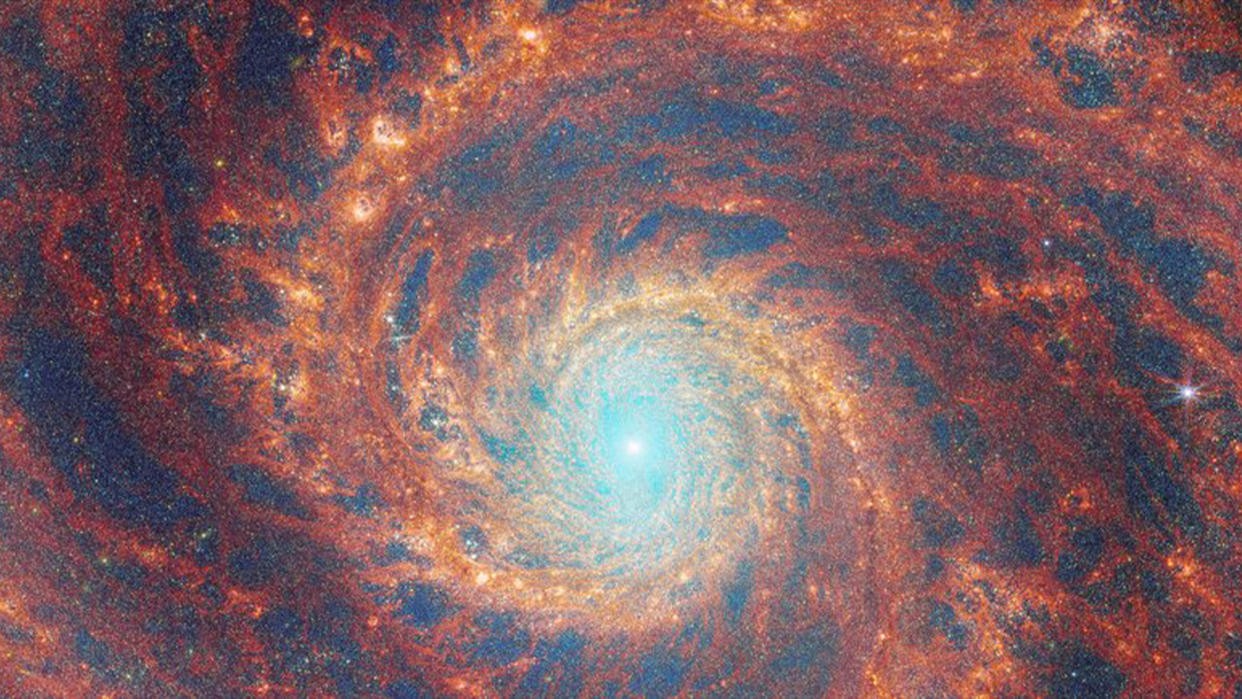
After two years in space, the world's most powerful telescope has forever changed the way curious Earthlings view the cosmos.
The cutting-edge, $10 billion James Webb Space Telescope (JWST) shared its debut image with the world on July 12, 2022, peering deeper into the universe than any telescope before it. Since then, JWST has captured the mystery and beauty of space in image after dazzling image, both confirming and confounding longstanding theories about how the universe works.
Here are 35 of the telescope's finest observations.
Related: The James Webb telescope has broken cosmology. Can it be fixed?
The Pillars of Creation
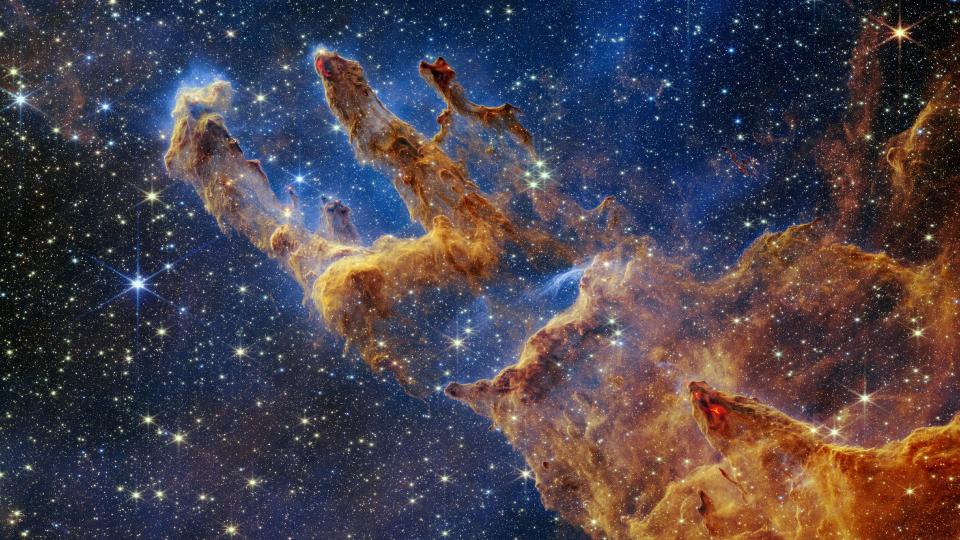
The towering pillars of creation – a vast span of sculptured gas and dust located about 6,500 light-years from Earth in the Eagle Nebula – have been a famous Milky Way landmark since the Hubble Space Telescope observed them in 1995. JWST's shimmering portrait of the iconic structures could help scientists uncover new insights into how stars are born, and how they shape the space around them.
A spectacular spiral

Spiral galaxies like our Milky Way are common throughout the universe. As part of a recent survey, JWST zoomed in on 19 known spiral galaxies, revealing their anatomy in stunning detail. Here, clouds of dust surrounding the galaxy glow in infrared light, appearing red and orange.
A 'lightsaber' in space
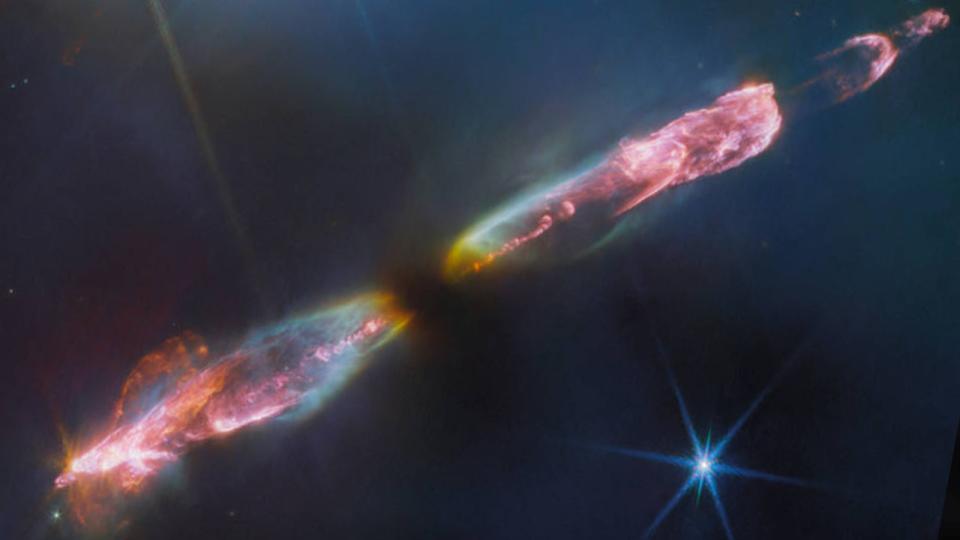
When a baby star throws a tantrum, the whole galaxy hears about it. Here, a newborn star called HH 211, located around 1,000 light-years from Earth in the Perseus constellation, spews out supersonic streams of gas and dust into space, triggering visually stunning shockwaves that researchers say "look like lightsabers." Our own sun may have looked similar, billions of years ago.
A vibrant nursery
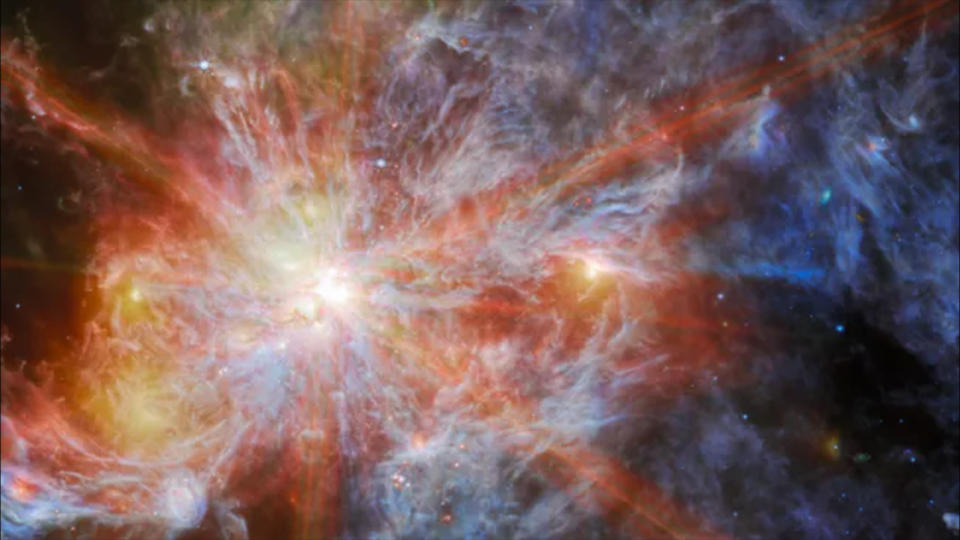
Exploding with color, a nearby stellar nursery cries to life. The orange, yellow and blue image features the interstellar atomic hydrogen clouds of the 1,630-light-year-wide nebula N79, located in the Large Magellanic Cloud, a satellite galaxy of the Milky Way. This region is actively forming stars and remains virtually unexplored by astronomers.
Webb's deep field
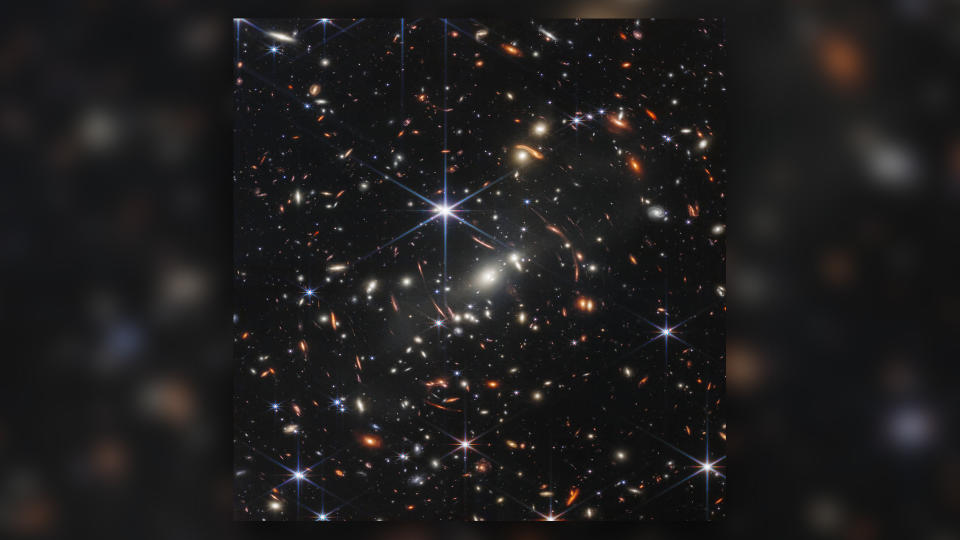
JWST's debut image is also the deepest and most detailed image of the universe ever taken. At the dazzling, jewel-filled image's center, a bright cluster of galaxies magnifies the light of stars more than 13 billion light-years away, while thousands of younger galaxies cartwheel through the background.
The 'Phantom Galaxy'

Like a celestial nautilus shell, the eerie 'Phantom Galaxy' swirls through space about 32 million light-years from Earth. Scientists call it a "grand design spiral," due to how prominent and well-defined the galaxy's spiral arms are.
'Mountains' of the Carina Nebula
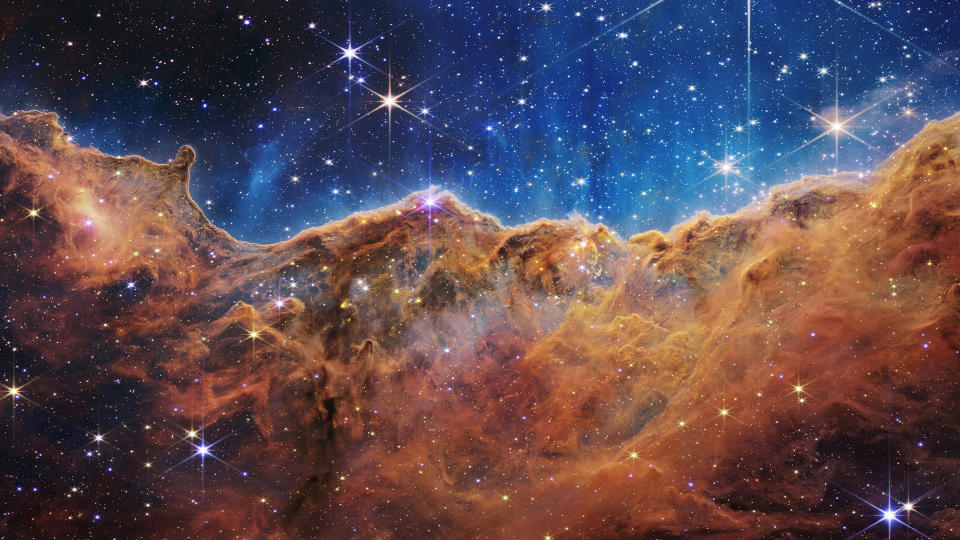
One of JWST's debut images was this cosmic landscape painting of the Carina Nebula, located about 7,600 light-years from Earth. Lit up and sculpted by the radiation of baby stars, this is one of the most active star-forming regions ever discovered.
Stephan's quintet
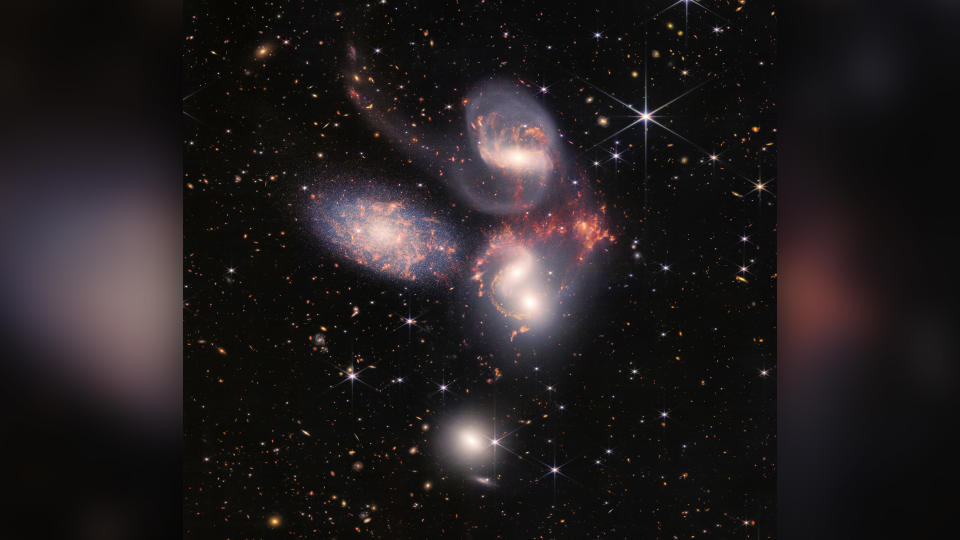
Stephan's Quintet, a group of five tightly-bound galaxies located 290 million light-years away in the Pegasus constellation, is what happens when one part of space gets too crowded. Four of the tight-knit galaxies continuously swoop past one another in a dangerous dance of near-collisions, slowly warping and stretching the stars between them.
The Southern Ring nebula
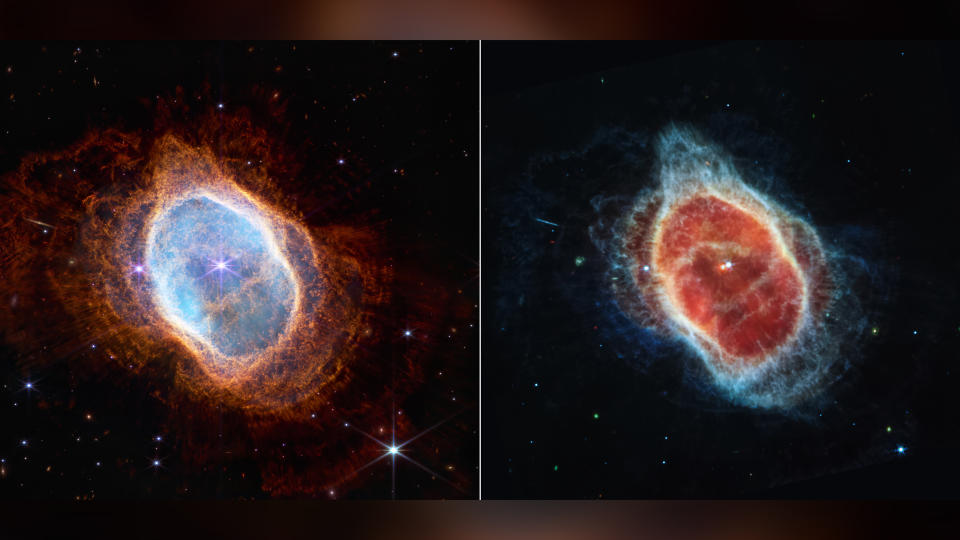
Also called the "Eight-Burst nebula" for its figure-eight shape, the Southern Ring nebula is a gargantuan cloud of gas and dust expelled by a dying star some 2,500 light-years away. JWST imaged the stellar graveyard with two cameras, revealing more details in the nebula's gas structures in the left image, and a secret, second star hiding at the center of the right image.
The Cartwheel Galaxy
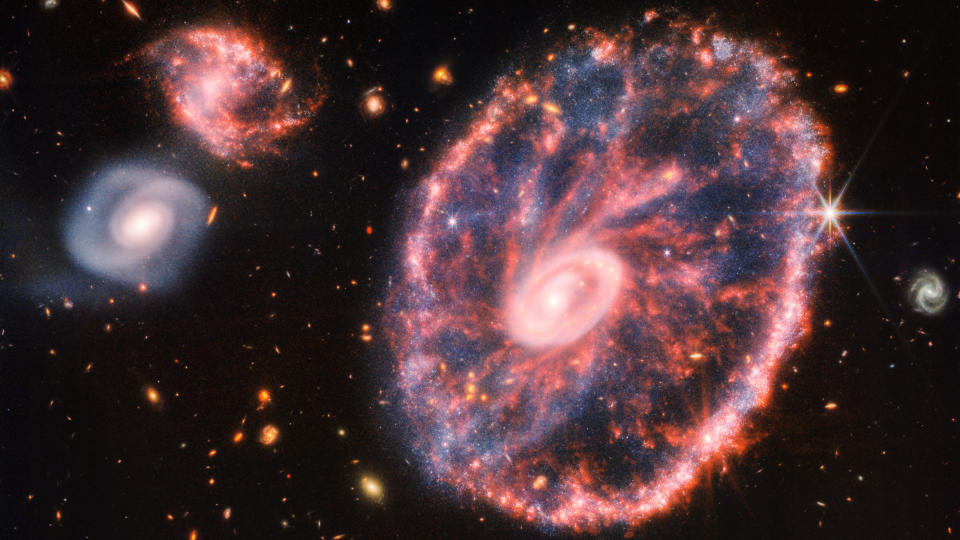
The aptly named Cartwheel Galaxy, located about 500 light-years from Earth, is a spectacular spiral galaxy shrouded in hot dust. Once, it likely looked very similar to the Milky Way — however, an ancient collision with a smaller galaxy gave it this distinct wagon-wheel-like shape.
Ghostly rings of Neptune
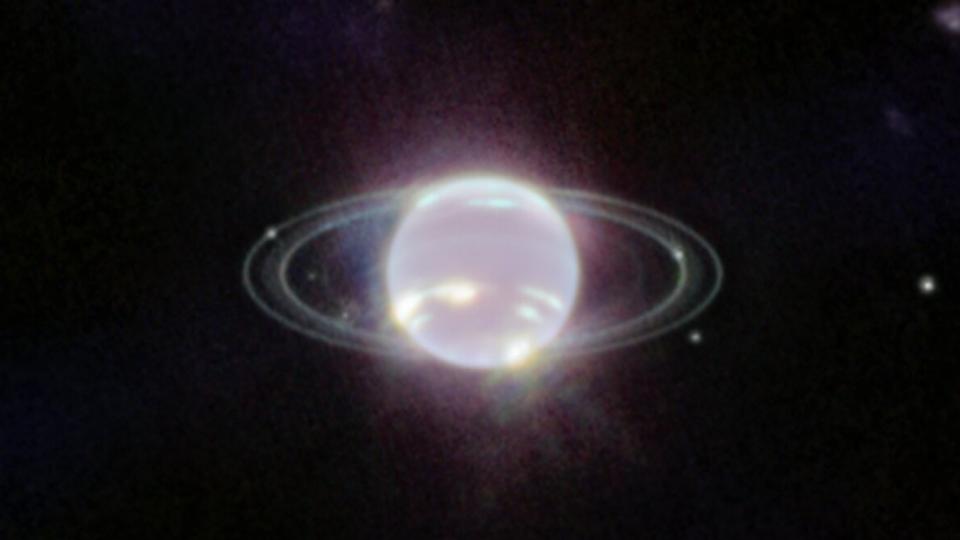
Saturn is the undisputed poster child of planetary rings, but in this gauzy JWST image Neptune gives the champ a run for its money. Neptune, the eighth planet from the sun, has five rings made of icy dust, which are rarely visible due to the planet's position on the far end of the solar system. Here, they sparkle like crystals.
An explosive 'star factory'
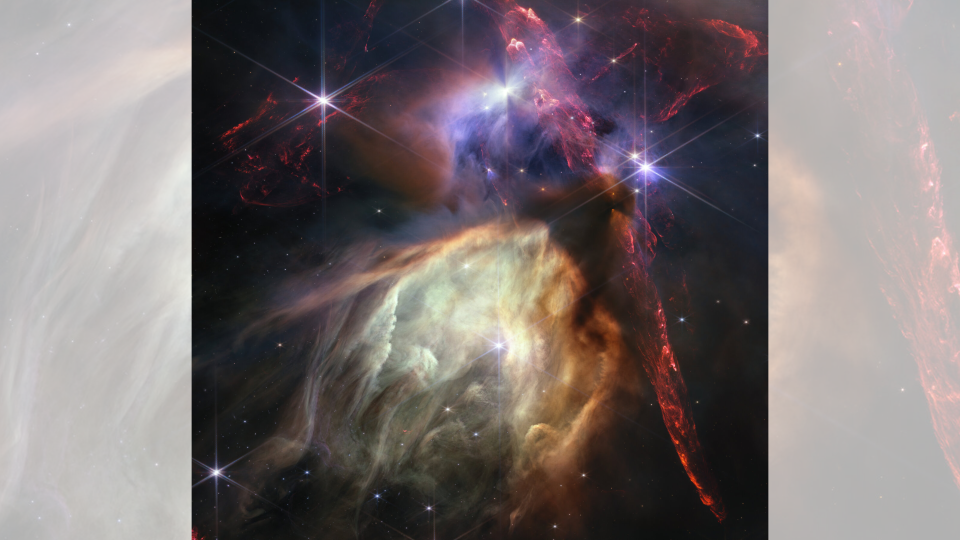
In honor of its one-year anniversary of science operations in July 2023, JWST revealed this gorgeous image of Rho Ophiuchi, a star-forming region roughly 390 light-years away in the constellation Ophiuchus. This closeup of roughly 50 newborn stars blazing brightly through clouds of iridescent gas shows the majesty of the closest star-forming region to Earth.
Vanishing Saturn

This raw JWST image of Saturn taken in June 2023 hasn't been fully processed, but that doesn't stop it from being completely stunning. Only Saturn's rings glow in this eerie black-and-white image, which has yet to receive the post-processing treatment to render our cosmic neighbor in its familiar yellow- and gold-banded outfit.
Shimmering Orion
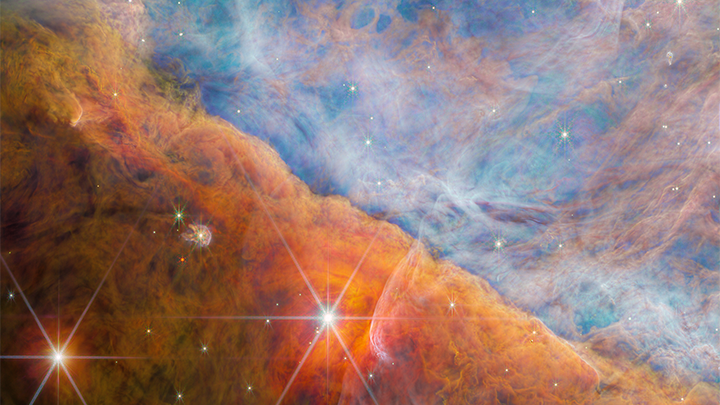
When astronomers zoomed in on the the Orion Nebula, located about 1,350 light-years from Earth, they found more than a dazzling starscape. Nestled in an infant star system there, JWST detected clear traces of carbon-based molecules, which are precursors to organic life. This discovery does not indicate aliens in Orion, but it does shed light on the cosmic process that grow the so-called building blocks of life in star systems around the universe.
Uranus in high-def
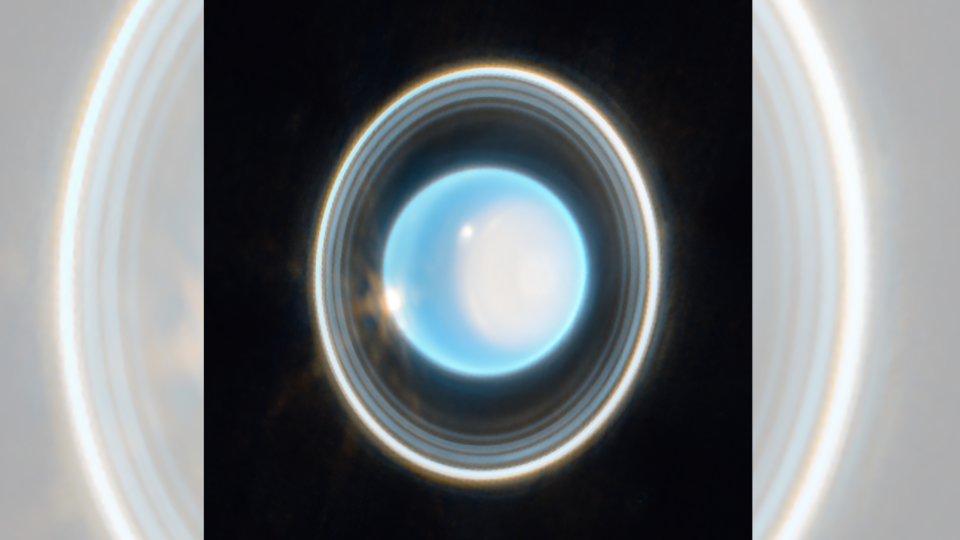
Like Jupiter, Uranus is not well known for its rings. Still, JWST's cosmic close-up of the 7th planet from the sun reveals 11 of Uranus' 13 known rings in dazling detail. It's a radical new view of a planet that is too distant to be seen with the naked eye from Earth.
Old and faint
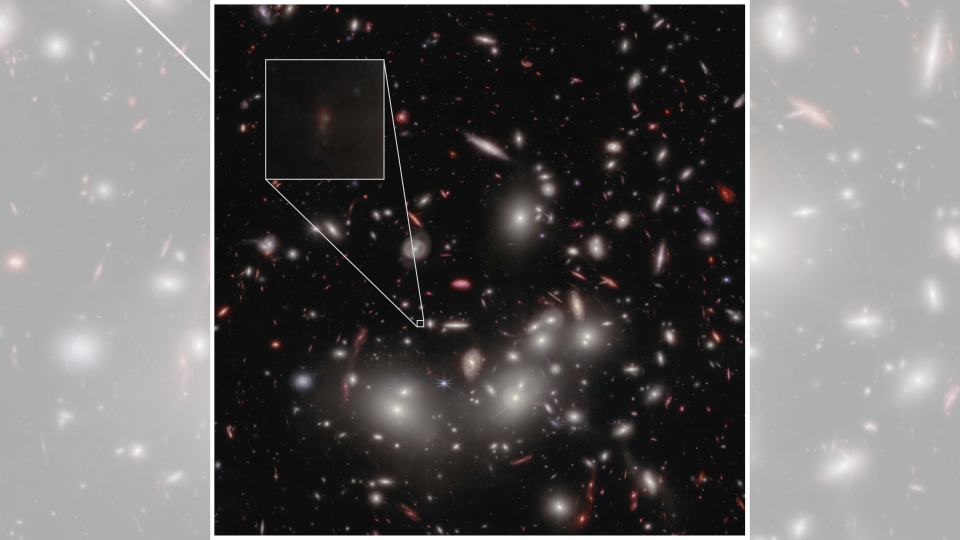
In one of its most impressive feats yet, JWST looked back to the dawn of the cosmos to identify the faintest galaxy ever seen. Called JD1, the galaxy — whose light traveled for roughly 13.3 billion years to reach us — was born just a few million years after the Big Bang. Back then, the cosmos was shrouded in a pitch-black fog that not even light could pass through; galaxies like this one were vital in burning the gloom away.
Orion's sword
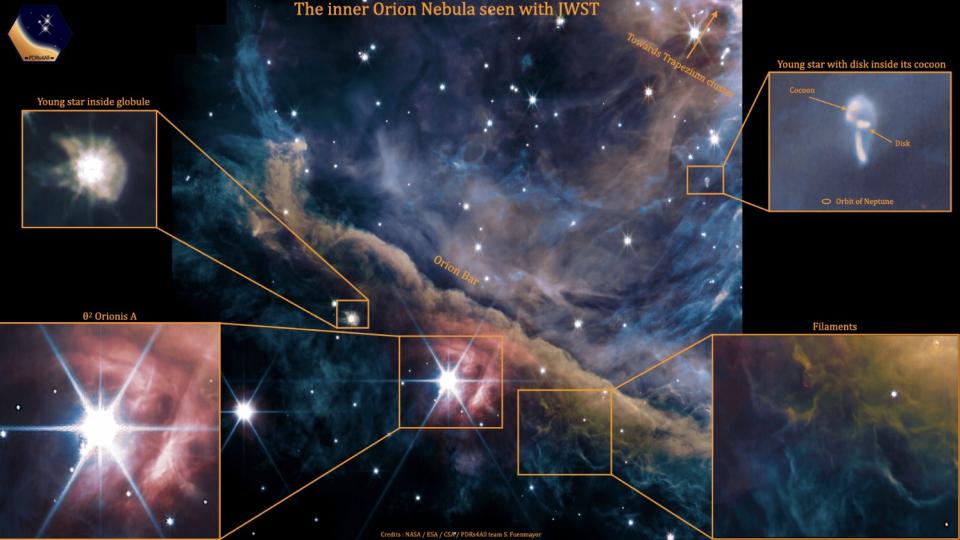
Located just a few hundred light-years from Earth, the Orion constellation is home to some of the largest and brightest stars in the sky (including the infamous red star Betelgeuse). This JWST image ignores Orion's infamous belt to focus instead on his sword, where the Orion nebula — one of the biggest, brightest star-forming regions in the sky — lurks.
A fiery hourglass

A young star blasts streams of gas into surrounding dust clouds, creating a fiery hourglass within the constellation Taurus.
The Tarantula Nebula
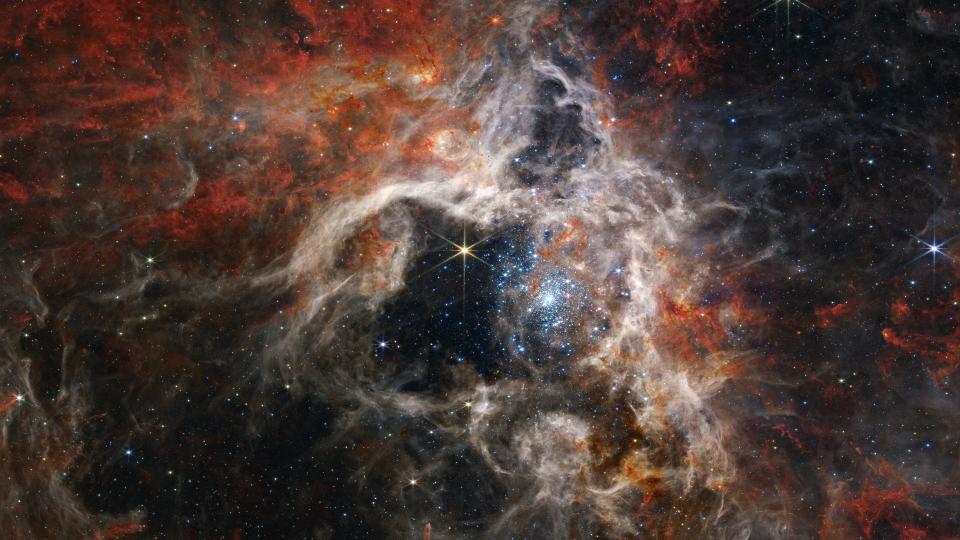
Stretching 340 light-years across, the Tarantula nebula stretches spindly legs of gas around a cosmic cavity carved by newborn stars.
Eerie Einstein ring
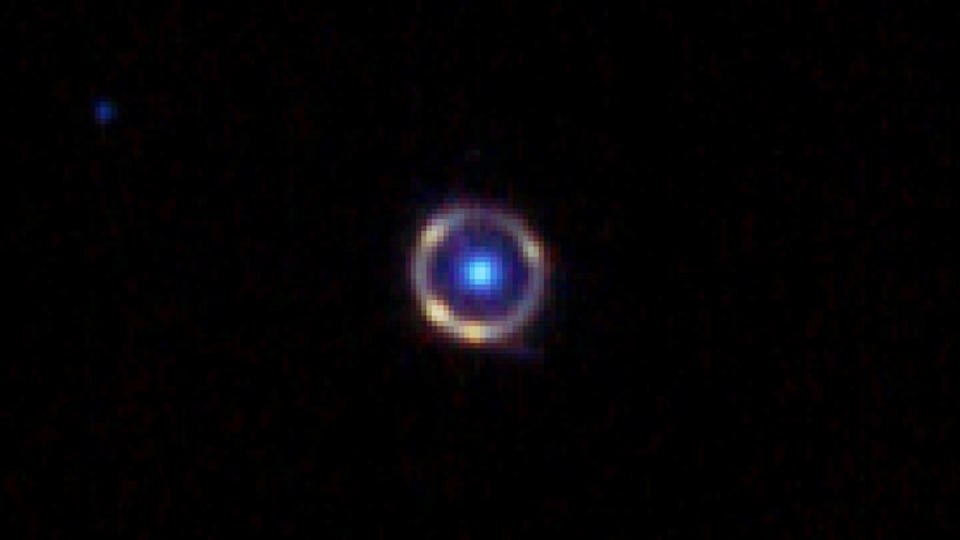
Like a cosmic bullseye, this trippy deep-space object is called an Einstein ring. Named for Albert Einstein, who predicted that massive objects in space could magnify or lens the light of objects far behind them, the eerily perfect circle is an illusion created by warped space-time.
'Bones' of a spiral galaxy
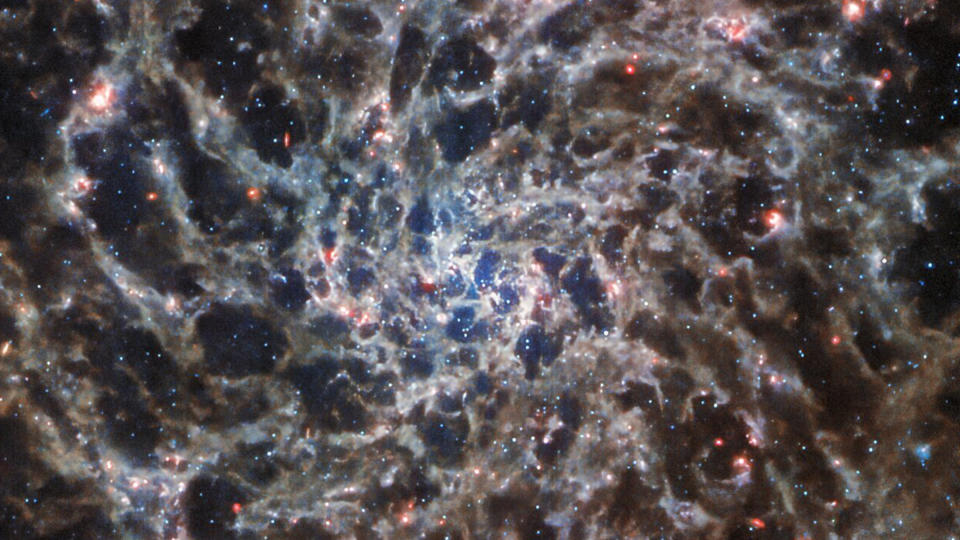
This cosmic knot of gas, dust and stars belongs to the spiral galaxy IC 5332, located in the constellation Sculptor more than 29 million light-years from Earth. As it sits nearly perfectly face-on with respect to Earth, its spiral arms can be seen incredibly clearly.
Ghostly Pillars of Creation

A ghostly shroud of dust cloaks the infamous Pillars of Creation in this showcase of JWST's mid-infrared instrument (MIRI). Unlike the more colorful view of the Pillars shared earlier, the stars hidden within the dust clouds aren't bright enough to appear for MIRI, creating a spooky and somber portrait.
A galactic collision
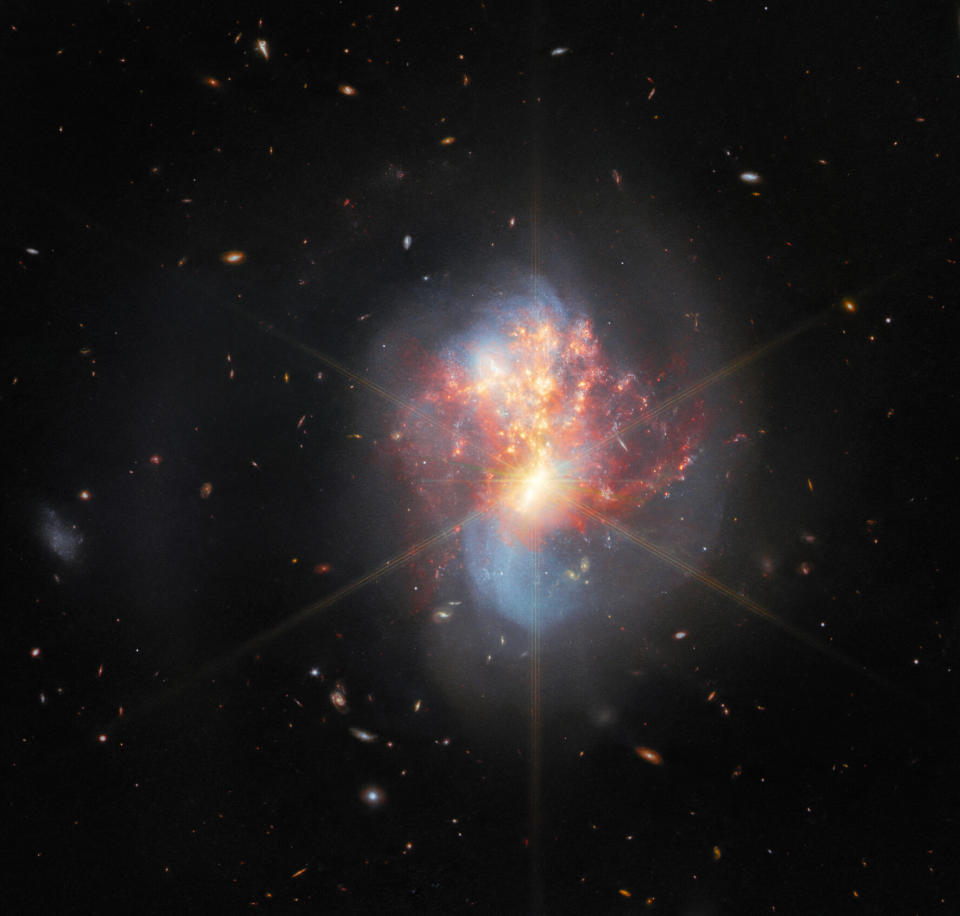
A pair of colliding galaxies, called IC 1623, plunge into one another, igniting a burst of star formation. This chaotic process may well be creating a new supermassive black hole at the center of the two galactic behemoths.
Cosmic clash
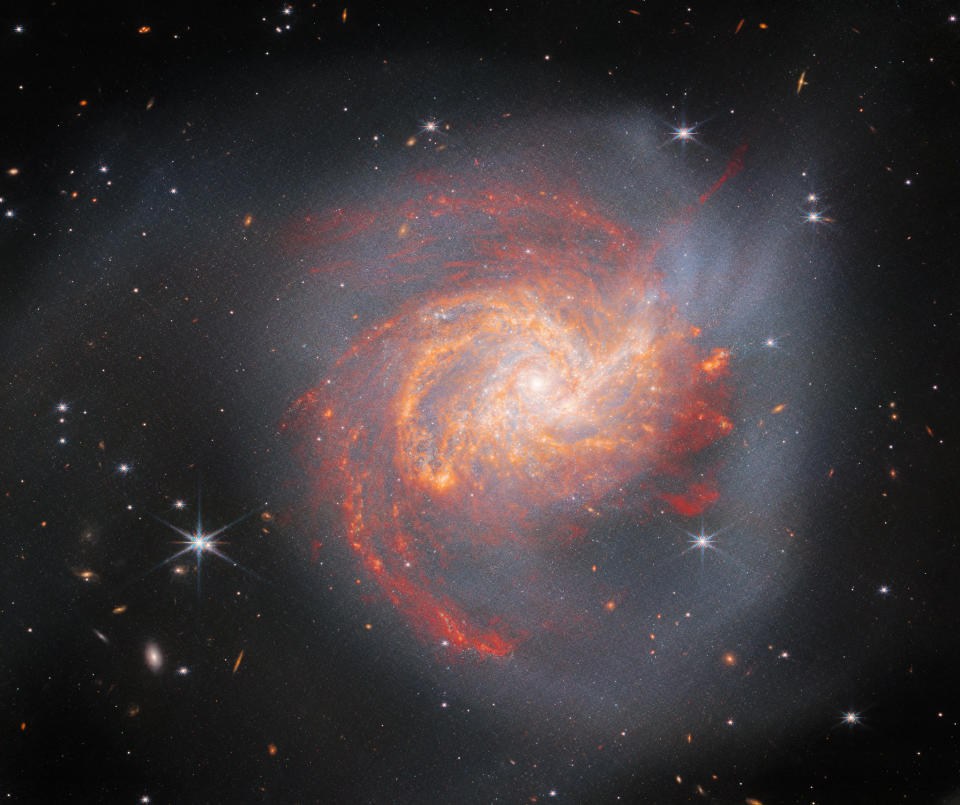
JWST's image of the galaxy NGC 3256, located 120 million light-years from Earth, shows the wreckage of an ancient cosmic clash. The galaxy is the twisted result of a head-on crash between two large spiral galaxies, which likely occurred 500 million years ago.
A 'knot' of galaxies in the early universe
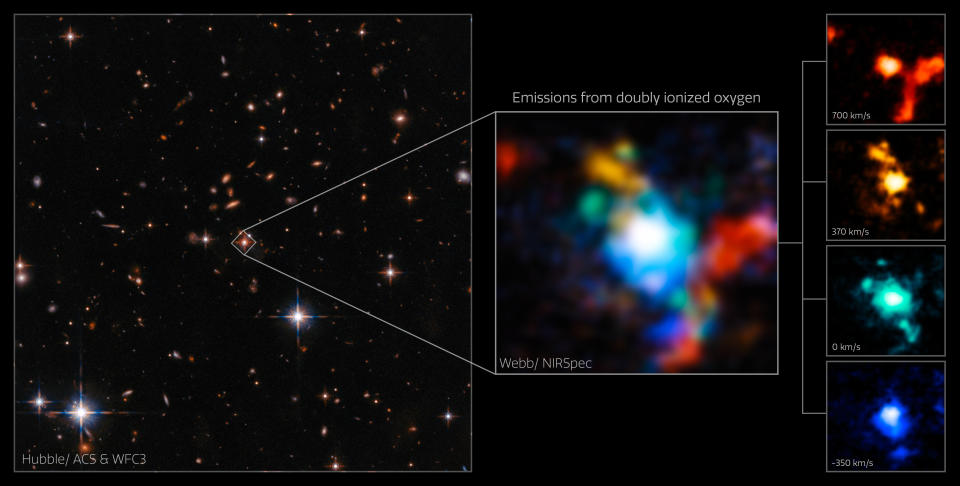
No less than five galaxies cluster together around an enormous, ancient black hole known as a quasar. This cluster, located 11.5 billion light-years away, is one of the most ancient objects imaged by JWST so far.
Webb's first direct image of an Exoplanet
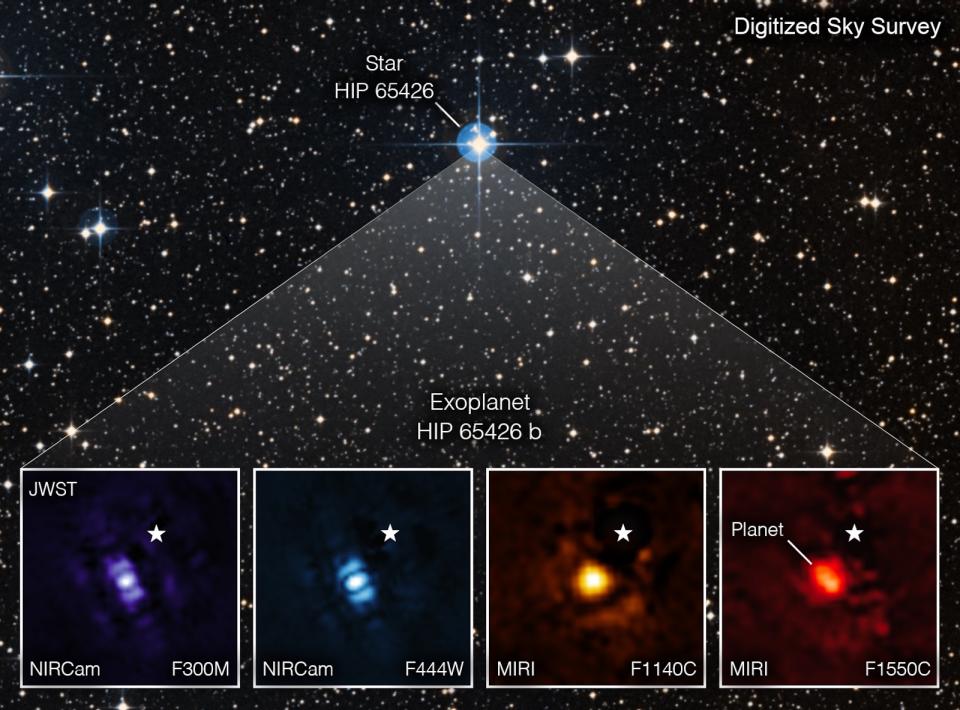
In this image, JWST captures its first-ever image of an exoplanet, or a planet outside our solar system. The planet, named HIP 65426 b, is a gas giant up to 8 times more massive than Jupiter and located 349 light-years from Earth.
Jupiter's Great Red Spot

Jupiter's Great Red Spot glows brightly in this rare JWST image or our own solar system. Off to the left, Jupiter's moon, Europa, makes a cameo appearance.
Starlight, star bright

Six points of light shine out of each star in this golden test image taken before JWST's official debut. In the background, millions of distant galaxies glow.
The darkest, coldest ice in space
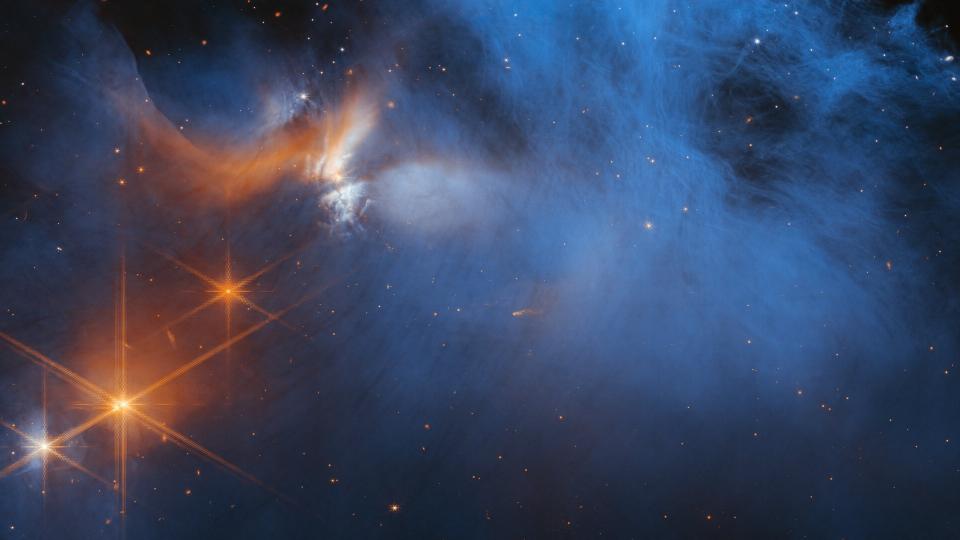
Peering into the depths of an interstellar molecular cloud named Chameleon I, the JWST identified the coldest ice in the known universe. The frozen molecules measured minus 440 degrees Fahrenheit (minus 263 degrees Celsius).
Cloud watching on Titan
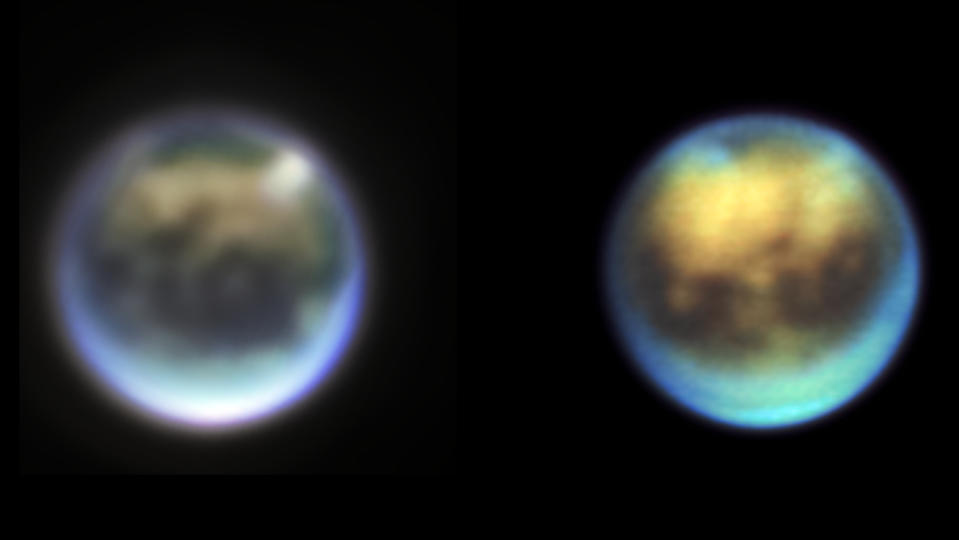
Several JWST images of Saturn's largest moon, Titan, revealed clouds moving across the moon's northern hemisphere. Studing these clouds could help scientists better understand what Titan's atmosphere is made of, and how it formed in the first place.
Baffling early galaxies
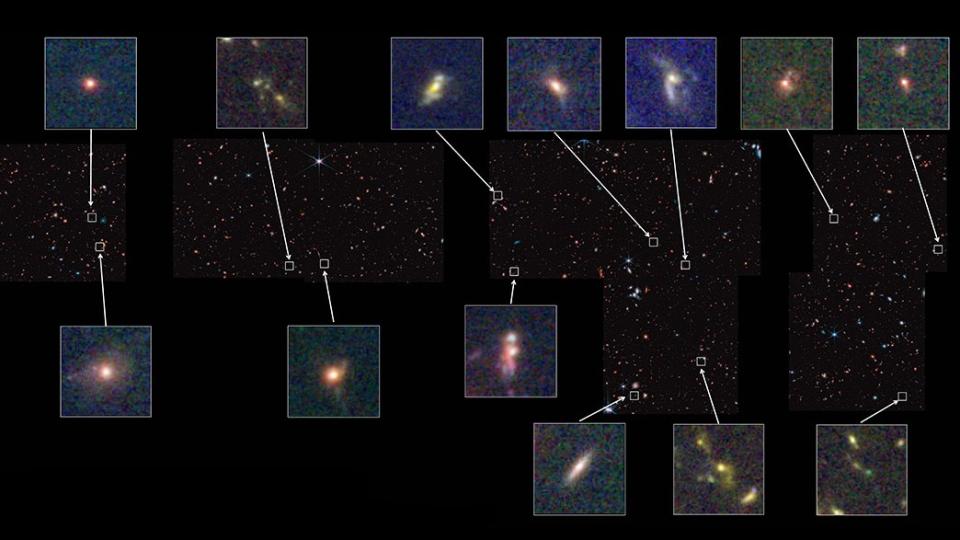
Looking at 850 galaxies from the early universe, dating between 11 and 13 billion years old, researchers found roughly the same ratio of elliptical, spiral and irregular galaxies as are present in the modern universe. These findings suggest galaxy formation in the early universe did not occur as slowly as once thought.
A spiral in close-up
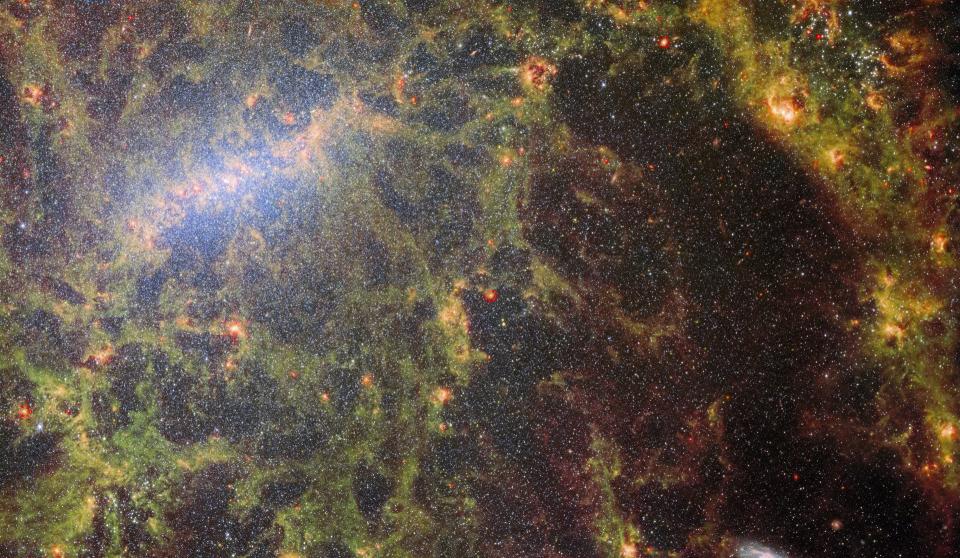
Here JWST zooms in on the barred spiral galaxy NGC 5068, whose central bar is visible in the upper left corner of the image. According to ESA, the galaxy lies around 17 million light-years from Earth in the constellation Virgo. Thousands upon thousands of stars make up this twisted tendril.
A wreath of stars
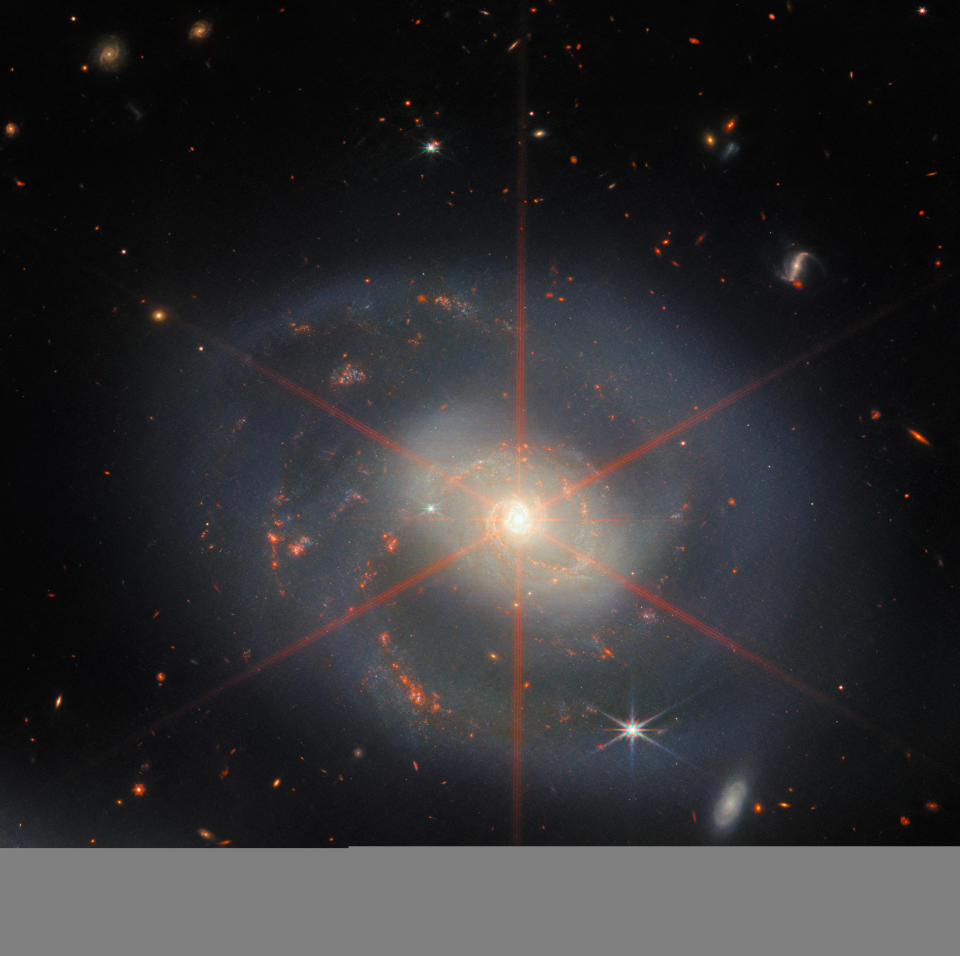
The spiral galaxy NGC 7469, located 220 million light-year from Earth, shines like a glorious wreath of stars. A bright, six-pointed object at the galaxy's center may be an active supermassive black hole.
A ghostly spiral
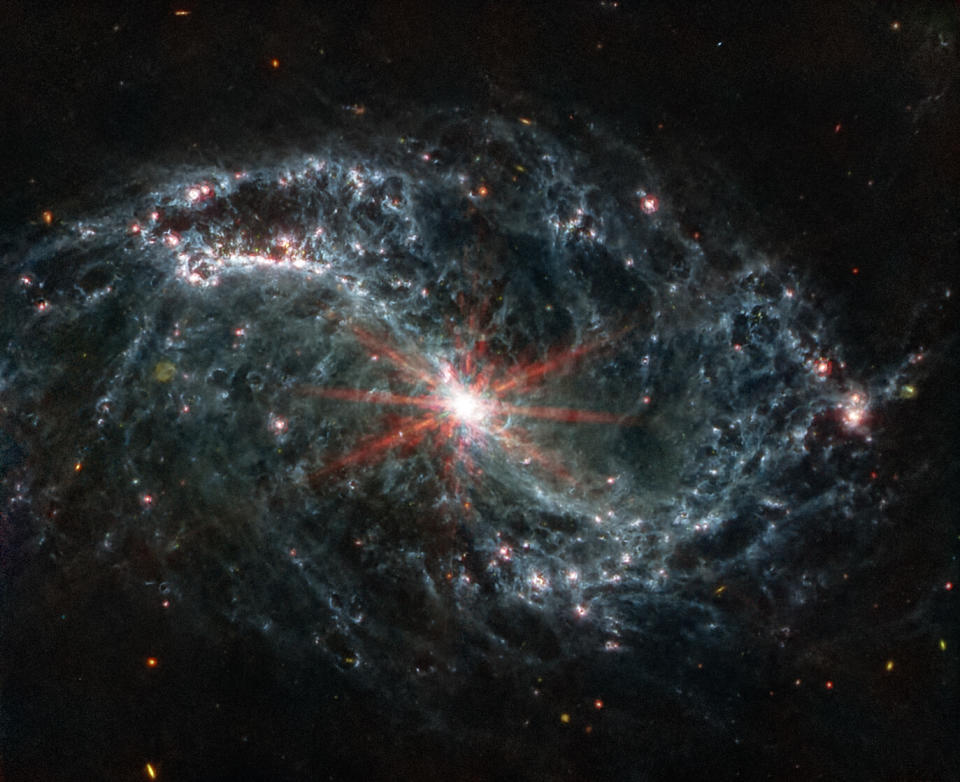
The spiral galaxy NGC 7496 looks like a cloud of smoke in this image taken with JWST's mid-infrared instrument. Cavities and holes in the spiral arms show where young stars have sculpted the galaxy with intense radiation.
Thousands of spirals

Thousands of jewel-like galaxies congregate in this JWST image of the Hercules constellation, about 1 billion light-years from Earth.
Editor's note: This article was edited on Dec. 5, 2022 to correct a typo suggesting that JWST's image of exoplanet HIP 65426 b was the first image of an exoplanet ever taken. Rather, it is the first direct image of an exoplanet taken by the JWST.
This article was also updated on Feb. 22, 2024, to add several new images and descriptions.
